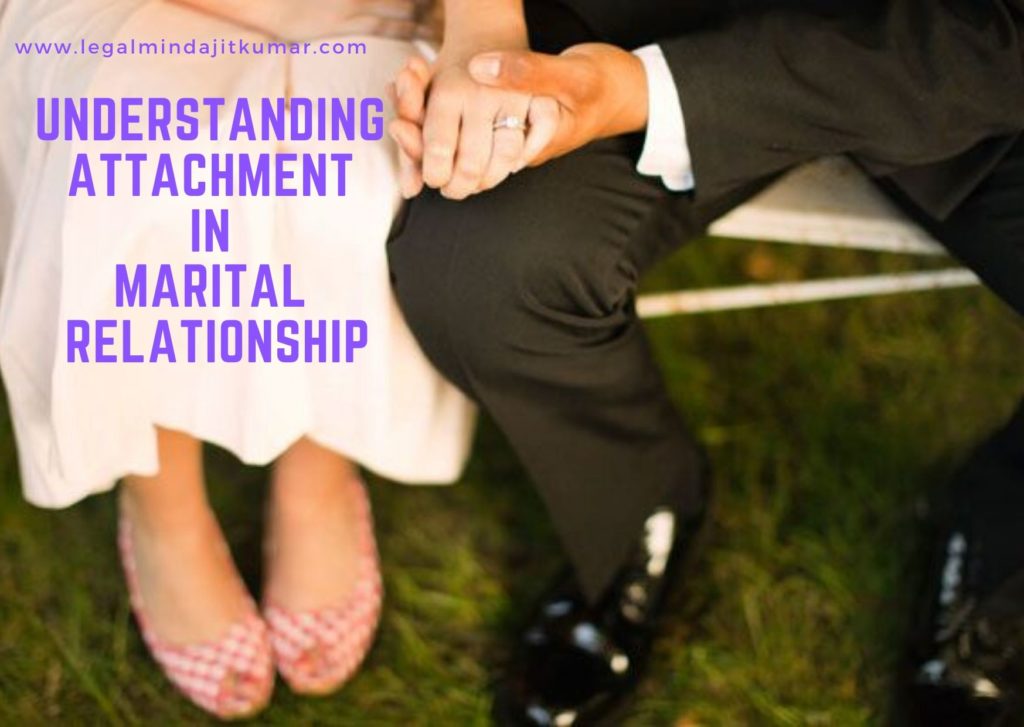
Attachment is a human behavior of seeking physical and emotional proximity from your secure base i.e., the mother for a Newborn or a Toddler or from the spouse in a Marital Relationship. A newborn baby knew and recognize the physical contact and even can differentiate the touch of male and female. Thus, the need for attachment is inherent in humans.
The Attachment is unique for each person, much like the DNA of a person. Attachment, being a predominant behavior is likely to be influenced by the physiological characteristics of a person (being partly a mental process) besides being influenced by the environment in the upbringing of a child.
The Attachment style is a conscious development starting from birth and throughout early childhood. If the parents were available regularly to provide physical and emotional security to the child in early childhood, the child is likely to have a secure attachment in adulthood. On the contrary, if the child got an environment where parents were only available intermittently to provide necessities only, the child is likely to have Anxious or Avoidant Attachment in later part of his/her life.
So, applying the theory of Attachment, it opens a window into you to get to know yourself. It also helps you to know about the people around you from an attachment perspective.
What is the role and relevance of Attachment in Marital Relationship?
In any relationship, each individual has some specific needs besides the basic need of a connection physical/emotional and a person needs security for the fulfillment of those needs from the relationship. A newborn child needs physical and emotional proximity and that is why when the mother is out of sight, he/she would be upset and in protest starts crying or throwing other tantrums demanding the presence of the mother.
Similarly, the other intimate relationship like Marital relationships have specific needs of physical and emotional proximity and dependency for these needs on the other spouse is a normal thing. It is a human natural tendency to seek dependency in any relationship. The wife could be financially independent, intelligent with all maturity but still, be dependent on the need for physical and emotional proximity. This behavior of seeking intimacy and proximity (physical/emotional) in Marriage gives three forms of Marital Attachment. Those are:
a. Anxious Attachment or Insecure Attachment;
b. Secure Attachment; and
c. Avoidant Attachment
In each attachment style, the partners have different and respective attachment roles acting as a secure base. For example, the partner with Anxious Attachment would be preoccupied with the relationship and continuously seek his/her partner’s time to get reassurance.
The dependency of any of the partners in marriage for seeking proximity and intimacy is not bad. The seed of secured dependency erupts into an aspiration to achieve independence in life. Once, a spouse has a secured base and has a security to fall back to his/her secured base i.e., the other partner, it is always easy to be independent and achieve your goals.
An intimate relationship like marriage brings the people together and make them one. So much so that one can feel the pain of the partner. Such a relationship also brings physiological changes and in a given attachment style can change the BP level of the other spouse. A mere hand-holding can bring a down in the anxiety level of the other spouse in secured attachment is the true reflection of the fact that marriage (especially in a secure attachment) brings physiological change. In an intimate relationship, each can regulate each other’s psychological and emotional wellbeing.
“I had visited “World of Wonders” at Rohini, Delhi a couple of years back with my wife and kids. One of the joyrides of a giant wheel, my wife sitting next to me got terrified and was under severe stress and immediately grabbed my hand and clutched it throughout the ride. However, later she shared with me that this simple spousal hand-holding helped her to reduce the stress and complete the ride. The physical proximity and availability of partner have influenced the stress response.”
Most people have a secure attachment with an almost equal percentage of people having an Anxious and Avoidant Attachment. There may be questions in your mind, as to how one can determine his style of attachment and how it is affecting your relationships.
In the infographic image of Marital Attachment Quiz given below, you can get to know your attachment style. Before heading to that Quiz, Please understand the basic traits and characteristics linked to each attachment style.
Anxious Attachment
As the name suggests, this class of people is anxious about everything in the relationship and needs continuous reassurance from their partner that they are not going to leave them. As they need continuous reassurance by seeking a personal time of partner for intimacy and proximity. It is only as a protest strategy, that they might rebuff any attempt of intimacy from their partner.
They are more inclined to be preoccupied with the relationship on the slightest threat to the relationship. Anxious attachment partner is more sensitive to rejection and have a sixth sense eye and are usually correct in their information about their partner. However, due to anxiety, they are not able to act as emotionally intelligent people and often later regret what they have said or done.
Such acts of Anxious Attachment partner sometimes infringe the personal space of the other partner and are perceived by the spouse as being controlling or manipulating them.
Secure Attachment
People with secure attachment are emotionally intimate with no insecurity feeling. They find themselves secure in their relationship being more closer to and intimate with the partner. The partner with a secure attachment style is more reliable and open to communicate with flexible views for making mutual decisions.
They commit to dependency and are open, frank to present their viewpoint. In case of any small difference or conflict, they resolve by effective communication without making it a question of their entire relationship.
Avoidant Attachment
Some people have deep-rooted principles and ideologies. They idealize a life of self-sufficiency and do not like a partner, who shows traits of dependency treating them as a secured base or secure anchor to fall back. Thus, they try to keep distance even if they love their partner. Any attempt by the partner of seeking intimacy or closeness might bring such people of Avoidant Attachment Style into an uncomfortable zone.
They value their independence more than the relationship itself and sometimes applies strategies of devaluing partner, whenever more intimacy/dependency is being demanded. Partner of Avoidant Attachment is not eager to take up responsibilities and are less committed.

In the above, Marital Attachment Quiz, I hope you will be able to find out your Attachment style. If you find any difficulty, send me your chosen options by putting a comment in the below section. I will help you in knowing your attachment style enabling you to know yourself better.
The Author, Legal Mind Ajit Kumar, is a Relationship Coach, Family Mediator and an expert in conflict resolution besides being a practicing Divorce/Family Lawyer. If you are in a dysfunctional marriage and looking for a quick divorce, visit our website https://medvorce.com for a free registration by creating an account to find if you are qualified for a mutual and uncontested divorce.
If you have any questions feel free to comment below so that I can help you further. You can further suggest a new topic on any aspect of Couple Mediation and Relationship to make a new post. Also, please help me share this post and click to tweet! I’d appreciate your help. Let’s Start a WhatsApp Chat.
0 Comments